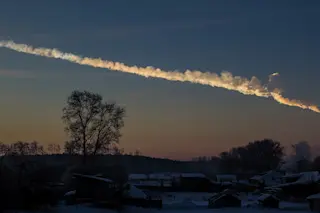How can we understand how natural hazards affected humans thousands of years ago? Sometimes we're lucky enough to have written records, like great earthquakes in the Roman Empire and China. Other times, legends and myths can suggest that something disasterous occurred -- events like a great flood or massive volcanic eruption. Human documentation, formal or not, of these events only gets us so far. We need evidence from the geologic record to confirm disasters ... and sometimes to even potentially discover them.
A study recently published in Nature Scientific Reports makes the claim that an airburst event, where a comet explodes in the atmosphere without impacting, may have occured over the Ohio River Valley almost 2,000 years ago. They also suggest that it could have lead to the decline of the dominant culture of the time, people we have dubbed the Hopewell. This is a dramatic conclusion built off of ...














